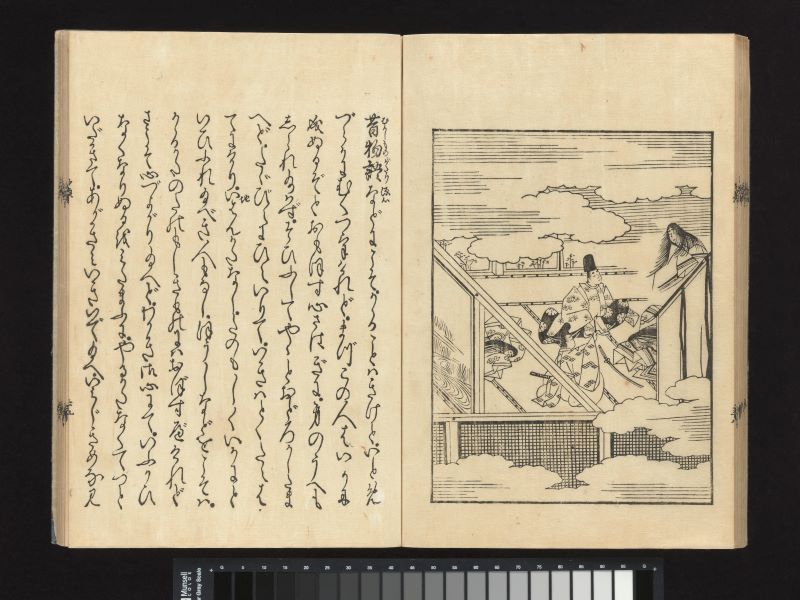Yamamoto Shunshō’s The Tale of Genji

Annotation
Largely considered the first novel, The Tale of Genji was written by Murasaki Shikibu, a noblewoman and lady-in-waiting during the early eleventh century. The Tale of Genji is a unique depiction of court life during Heian period Japan, as it follows the story of the fictional Hikaru Genji and his romantic life within aristocratic society. Though the scholarly language of the time was Chinese, Murasaki Shikibu wrote The Tale of Genji in Japanese, which was more often the literary language used by women. The Tale of Genji is believed to have been written in installments or chapter-by-chapter for other ladies in court.
The Tale of Genji was originally written in a highly complex and archaic court language, and was therefore difficult to read without specialized study even a century after its completion. However, in the early Edo period (1615-1868), it became more widely accessible thanks to texts of the entire story, digests, and handbook-style synopses. Yamamoto Shunshō designed one of the earliest mass-produced illustration of The Tale of Genji with woodblock prints. Yamamoto Shunshō’s work is twenty-four woodblock-printed volumes of ink on paper, and though Genji was not translated into modern Japanese until the early twentieth century, it has remained a staple work in the Japanese literary canon.
Credits
Yamamoto Shunshō, The Illustrated Tale of Genji, The Metropolitan Museum of Art, https://www.metmuseum.org/art/collection/search/670914